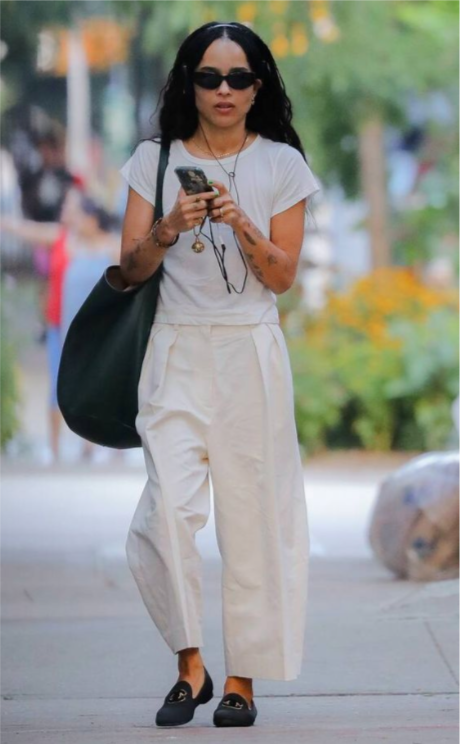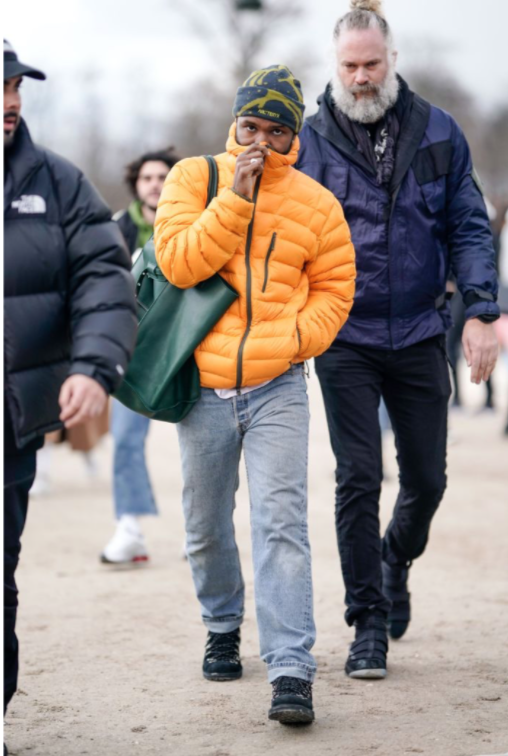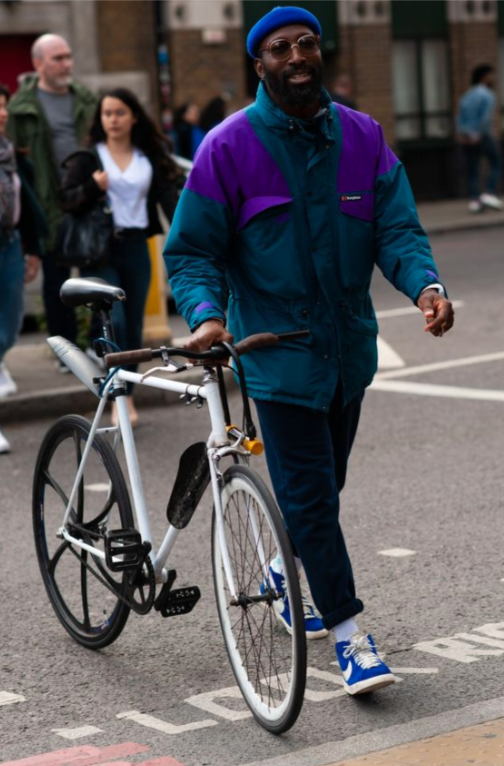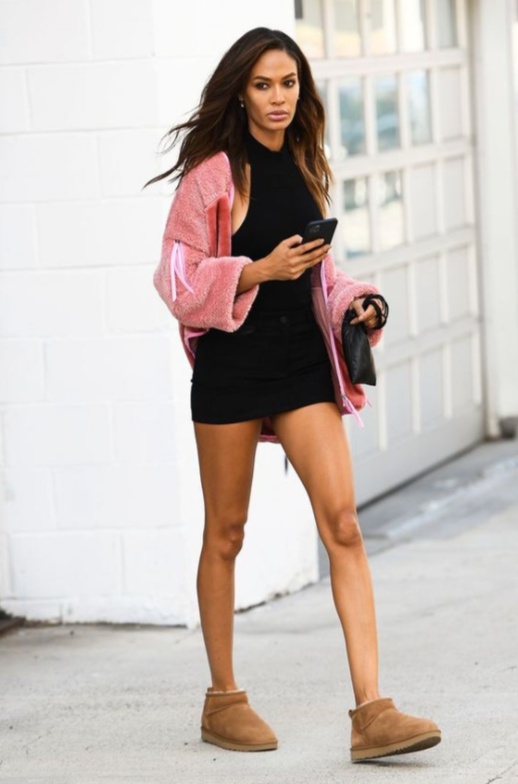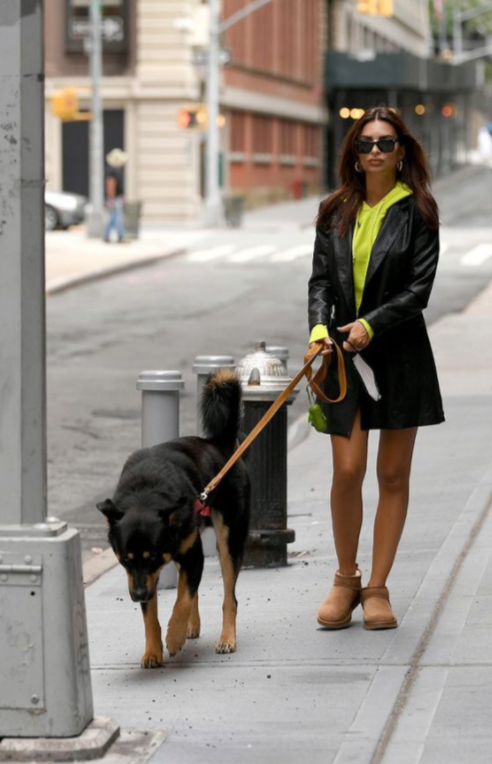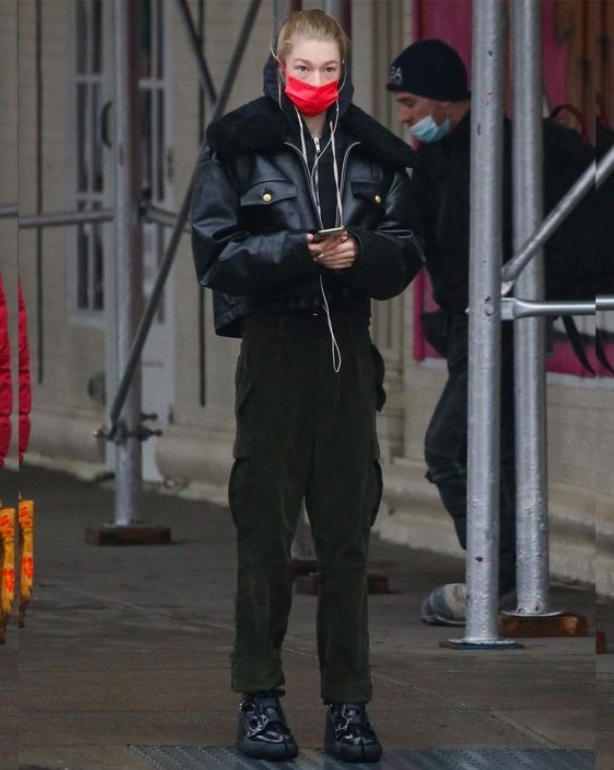Zoë Kravitz-Core and the Beauty of Being Low-Key

When visiting home for Christmas vacation this year, I found myself drawn toward a strange choice in footwear: my dad’s Merrell loafers, purchased no later than 2007. They were at least 6 sizes too big and looked like a pair of s***-brown clown shoes on me, but for some reason I found myself grabbing them when it was my turn to get the mail, run to the post office, or just walk around the block for some fresh air.
I scoured the internet for a pair in my size, but my dad accidentally being a vintage footwear enthusiast, I had little luck. The rest of my family thought I was crazy to be taking fashion inspiration from my (sorry, dad) unfashionable father, but I could not shake the vision I had for these shoes. Something stuck with me about the excitement of taking a truly mundane pair of shoes and using my imagination to turn them into a fashion statement. The Merrells being just one item, it seemed that out of nowhere, I was fascinated by simpler fashion. I thought it was merely a symptom of suburbia, but Instagram, Pinterest, and fashion media confirmed my instincts: being low maintenance is cool again.
As i-D and the Kardashians have decreed, we’re now in the last phase of the so-called “BBL era,” dominated by aesthetics of opulence, Facetune, and designer logos. For the past five or so years, feeds have been saturated with clearly contrived perfection, influencers taking no shame in having a glam squad or meticulously planned outfits. Flex culture became the norm, especially as logomania took over street style with the resurgence of Y2K aesthetics.
Recently, however, many have become fatigued by the saturation of these trends and pared-back style feels like a breath of fresh air. Being down-to-earth is as cool as (if not cooler than) flexing your designer brands because it proves you carry the energy and confidence to pull it off. Anyone wearing head-to-toe designer clothes can be considered “stylish,” but it takes a certain je-ne-sais-quoi to wear an objectively mundane outfit and somehow make it fashionable.
But, this is not to say that revamped normcore can’t be a widespread trend, which it is. For the past few seasons, it’s been creeping back towards the mainstream. First came the trend of “ugly-cute,” like dad sneakers and grandma sweaters. While some of this has come and gone (the words chunky FILA still send a chill down my spine), it serves as a broad example of fashion insiders taking traditionally unfashionable items and making them cool by association. The emergence of both ugly-cute and this era of revamped normcore could be tied to the rise of circular fashion and thrifting. By nature, thrift inventories consist of older, less desirable items, so it’s no surprise that thrifting and ironic fashion go hand-in-hand.
More on the mundane, streetwear has seen a recent obsession with so-called “gorpcore,” the hypebeast-ification of hiking and outdoors attire. With brands like Arc'teryx and The North Face hitting the mainstream, we see iterations of simpler fashion: traditionally unremarkable attire seeing mainstream success because it’s been adopted by the right community. On an actual hiker, Arc’teryx is nothing special, just utility sportswear. But on Frank Ocean, it becomes the epitome of cool, a brand that sells out and collaborates with some of the biggest designers.
Outside of the streetwear realm, this is also proven by the craze over ultra-mini UGGs, repopularized by models off-duty and celebrities walking their dogs. Not even a year ago, UGGs were deemed “cheugy” and were the mascot of the basic white girl, to be avoided at all costs. Just when the boot’s reputation was firmly in the ground, it was picked back up as the perfect low-maintenance staple. Those donning the boot are showing the world that they’re down-to-earth enough to wear something untrendy. They don’t need to dress to the nines, they’re chill enough to be like other girls and not care what anyone thinks.
This sums up the low-maintenance aesthetic: having the confidence to sacrifice a trendy reputation for the sake of ease, comfort, or budget. Not feeling the need to prove yourself by being on trend. In turn, this actually makes the uncool thing cool, the attitude and confidence flipping the “untrend” back onto itself. It’s enough to make anyone’s head spin if you try to explain to your dad why you keep stealing his loafers, yet how I envision this season’s fashion to be. The less trendy the purchase, the cooler it becomes. Having a jacket from Costco or shopping for boots at REI. Wearing the same outfit twice and holding on to items for multiple seasons. It becomes a badge of honor that you’re low-key enough or down-to-earth enough to wear such normal items and do such normal things.
This phenomenon is not only happening in fashion, but in other areas of visual culture. “Photo-dumping” on Instagram has become the norm, influencers foregoing Facetuned perfection for a more laid back, casual aesthetic. Or even PURPOSELY WEARING HEADPHONES WITH CORDS — one of the most insane cultural phenomena I’ve seen, but epitomizes this wave perfectly. Being at the pinnacle of culture, trends, or technology has become borderline embarrassing, people now working on the facade of being too chill to play the game. This is not to say that being effortlessly cool is actually effortless. There is something pretty ironic about spending hours on eBay looking for my dad’s perfectly tame shoes. “Quiet luxury” is still luxury and wired headphones users still have an iPhone. But, the new wave is about embracing the mundane and re-contextualizing the most niche yet normal items possible.
All of this calls into question our concepts of taste. Who is declaring what is and is not cool? Where is the line that dictates whether something is ironically average or actually just ugly? These questions are what excites me about this wave of fashion. Our interpretations of style are wider than ever, to a degree where almost anything can be cool just because you decide it to be. This mindset leaves room for endless possibility, embracing an attitude of wearing what you like simply because you do, feeling less of a need to buy into trends just for the sake of fitting in. One girl’s ironic-normcore-low-maintenance-effortlessly-chic-yet-average dream shoe might be another’s just-an-ugly-shoe shoe, and therein lies the beauty. Fashion determined, to an extent, that arbiting taste is entirely up to the wearer, that making something chic requires confidence and good energy.


